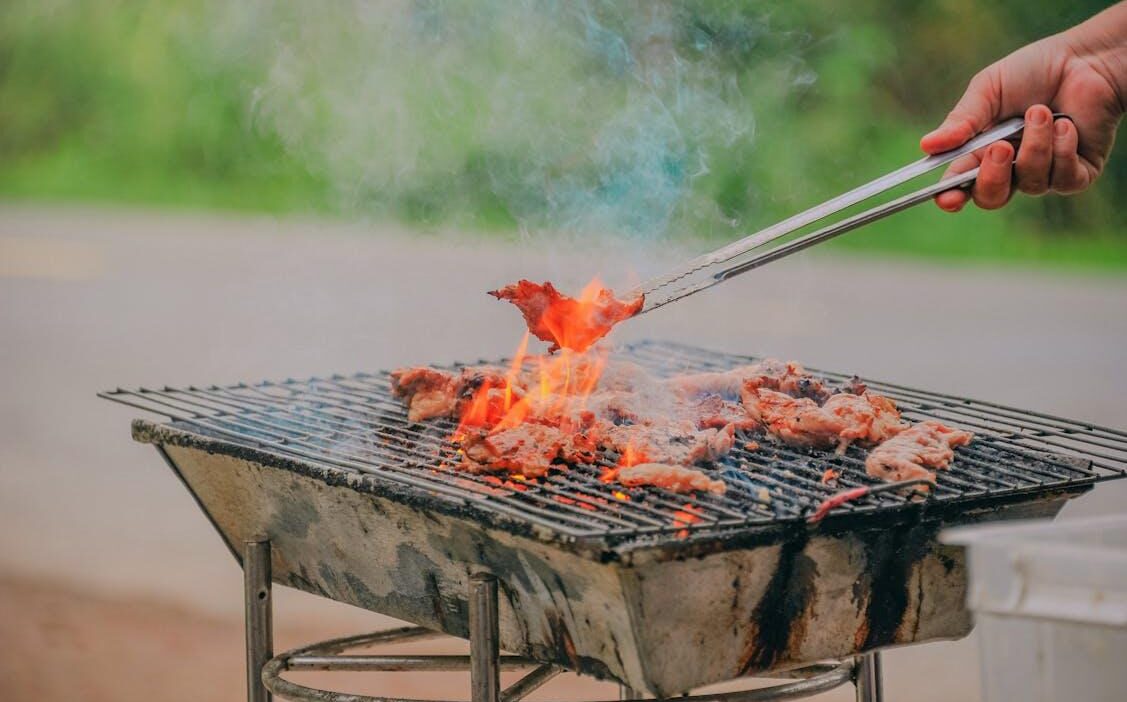Backyard grilling is one of the best parts of warm weather. Whether it’s a Saturday with friends or a quick dinner with family, firing up the grill just makes meals feel more relaxed. But once you’ve done burgers and hot dogs a dozen times, it might start to feel repetitive.
You don’t need a brand-new setup or expensive equipment to take your grilling skills up a notch. A few small changes to your process can make a big difference. From choosing better ingredients to managing the heat more effectively, good grilling is more about method than flash.
This guide covers tips that help make your next cookout more flavorful, more consistent, and more fun. Whether you’re a beginner or just looking to improve, there’s something here that can help you make better food on the grill.
Add Variety to Your Grill Rotation
Grilling can go beyond the usual suspects. Sure, burgers and chicken breasts get the job done, but your grill can do more. Expanding your go-to recipes keeps things interesting and gives you a chance to try new flavors. It also makes your cookouts more exciting for your guests.
Start by exploring different cuts of meat. Try bone-in chicken, marinated flank steak, or even seafood like shrimp or salmon. You can also add vegetables like zucchini, mushrooms, or bell peppers to balance things out.
If you want to switch up your flavor game, bring in some global influence. Grilling gives you the perfect opportunity to try different marinades and spice blends from other cuisines.
If you’re looking for something with bold flavor and a tropical twist, a Hawaiian huli huli chicken recipe is a great way to mix things up. It brings together sweet and savory flavors and works well for groups. You don’t need to change your whole setup—just try one new dish at a time to keep things fresh.
Trying new flavors also helps you learn more about how different ingredients react to heat, which makes you a more confident cook overall.
Get the Temperature Right
One of the most common problems with backyard grilling is uneven heat. Burnt edges and undercooked centers are signs that the grill isn’t being managed well. Getting the temperature right isn’t just about turning the knob or adding more charcoal; it’s about understanding how heat behaves on your grill.
Set up two heat zones when possible. Keep one side hot for searing and the other at medium or low for slower cooking. This lets you move food around depending on how it’s cooking without starting over.
Use a meat thermometer to take the guesswork out of doneness. It’s more reliable than cutting into the meat and more accurate than cooking by feel. For example, chicken should reach 165°F, while medium steak comes in around 135°F.
Once you get into the habit of checking temperatures, your food will turn out better every time—no guessing required.
Use the Right Tools
Grilling doesn’t take a lot of equipment, but the right tools can make a big difference. Start with a pair of long-handled tongs that give you control without putting your hands too close to the heat. A reliable grill brush helps you clean between sessions, keeping old residue from affecting flavor.
A meat thermometer is one of the most useful tools you can have. It takes the guesswork out of cooking meat and helps you hit the right temperature every time. Add heat-resistant gloves if you’re working with high heat or moving items around.
You don’t need to buy everything at once. Start with the basics and add tools as you go. Focus on quality and comfort. The easier it is to handle your food, the more confident you’ll feel each time you grill.
Don’t Skip the Marinade or Rub
Good flavor doesn’t start on the grill—it starts before the food even touches the grates. A simple marinade or dry rub can completely change how a dish tastes and feels. You don’t need complex recipes. Sometimes, a few spices and oil are enough to bring a dish to life.
Marinades help tenderize meat and infuse it with flavor. Letting meat rest in a marinade for at least 30 minutes helps lock in moisture and taste. If you’re short on time, even a quick rub with salt, pepper, garlic powder, and paprika can improve the final result.
Avoid sugary sauces early in the process. They can burn quickly and leave a bitter taste. Save them for the last few minutes of cooking or use them after the food comes off the grill.
This step doesn’t take much effort but makes your dishes stand out. Once you find a flavor profile you like, you’ll want to use it again and again.
Let It Rest and Serve It Right
Once you’ve cooked your food, don’t rush to cut it. Let the meat rest for a few minutes so the juices can settle. This keeps your food tender and flavorful. For smaller items like chicken thighs or burgers, 5 minutes is usually enough. For larger cuts like steak or pork loin, aim for 10 minutes.
Use that time to finish prepping sides or set up the table. Once the meat is ready, slice it against the grain when possible. This helps make each bite more tender. Use a sharp knife and cut only what you plan to serve. Keep leftovers whole to retain moisture.
Presentation matters too. Clean up your serving platter and keep sauces or sides nearby. A well-served dish makes the whole meal feel more put-together, even if it’s a casual backyard dinner.
Grilling is more than throwing meat on the fire. A few thoughtful changes—like better tools, smarter heat control, and flavor prep—can take your cookouts to a new level. You don’t have to do everything at once. Start small, try new things, and stay consistent.
Good grilling is about knowing your gear, trusting your timing, and making the most of every meal. Once you find your rhythm, backyard cooking becomes something you actually look forward to. And so will everyone else at the table.



